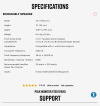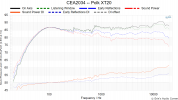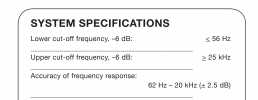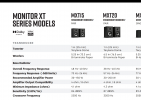Hi wonderful audiophile people, so nice to have such valuable info and feedback on this forum.
Been researching speakers that go deep in low frequencies and found discrepancies across both tests and specs.
Notably about mean on-axis levels as well as frequency response range.
1. How can a manufacturer claim 39hz but be tested at 64??
Namely the Polk XT20, S20 and ES20 which are rated 38, 39 and 44hz at +/-3dB respectively.
2. Does lowering the mids via EQ effectively raises the lower frequency threshold?
3. What else can I use as a cue whether a speaker can produce acceptable levels at 40-50hz?
4. As a side question, should I bother with 2 x 6" drivers for a wide and open room or go with 2 x 8" speakers, this is for a sub-less application.
Been researching speakers that go deep in low frequencies and found discrepancies across both tests and specs.
Notably about mean on-axis levels as well as frequency response range.
1. How can a manufacturer claim 39hz but be tested at 64??
Namely the Polk XT20, S20 and ES20 which are rated 38, 39 and 44hz at +/-3dB respectively.
2. Does lowering the mids via EQ effectively raises the lower frequency threshold?
3. What else can I use as a cue whether a speaker can produce acceptable levels at 40-50hz?
4. As a side question, should I bother with 2 x 6" drivers for a wide and open room or go with 2 x 8" speakers, this is for a sub-less application.







